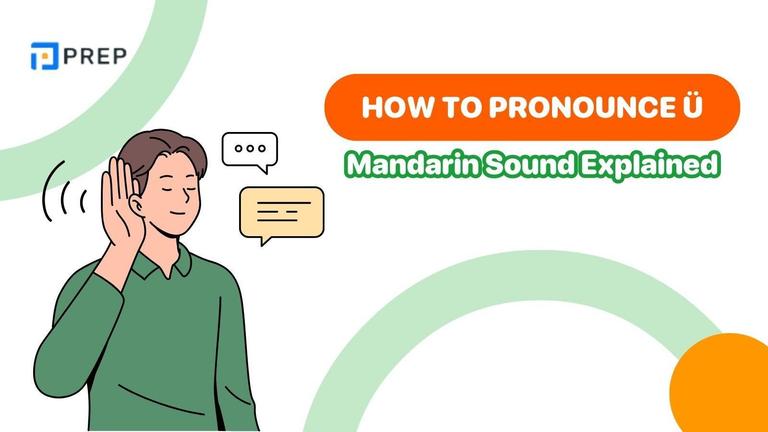How to Use In Time and On Time Correctly in English
“In time and on time” are commonly confused expressions in English, but they have different meanings and uses. This guide will help you clearly distinguish the two, apply them correctly in daily life and exams, and practice with real sentence examples and exercises.

I. What Do “In Time and On Time” Mean in English?
Although they both refer to timing, “in time” and “on time” have different meanings and are used in different situations. Understanding how each expression works is essential for speaking and writing naturally in English.
The phrase “in time” means something happens early enough, just before a deadline or before it’s too late to prevent a problem or to ensure success.
- It emphasizes urgency or narrowly avoided lateness.
- Often used with: in time to + verb, or just in time.
Examples:
- We arrived in time to catch the train. (We were almost late, but made it.)
- He finished the project just in time before the deadline.

The phrase “on time” means something happens exactly at the expected or scheduled time - not early, not late.
- It emphasizes punctuality and precision.
- Common in professional, formal, or scheduled contexts.
Examples:
- The class started on time at 9:00 AM.
- She always submits her assignments on time.

1. Key Differences Between “In Time and “On Time"
By recognizing the subtle yet important difference between these two phrases, learners can avoid common mistakes and improve the clarity of their communication — especially in exams or formal situations. Let’s break down the core differences to help you choose the right phrase in the right situation.
Comparison by Meaning and Use Case
|
Expression |
Meaning |
Common Use |
|
On time |
Happening exactly at the scheduled time |
Trains, meetings, deadlines |
|
In time |
Happening early enough to avoid being late |
Catching events, beating a deadline |
- On time implies punctuality, with precision.
My flight departed on time at 6:00 AM. - In time implies doing something just before it’s too late, often with relief.
I arrived in time to hear the opening speech.
Memory Tip:
- On time = punctual (you’re not late)
- In time = just in time (you avoided being late)
Accuracy with time expressions goes hand in hand with using punctuation in English correctly, especially in exams.
Situational Examples
Here are some sentence pairs to highlight the difference in usage, even when the actual clock time is the same:
- I arrived on time for the exam.
→ You followed the schedule; you were punctual. - I arrived just in time before they closed the doors.
→ You almost missed it, but made it narrowly. - She submitted the report on time.
→ By the exact deadline. - She got it done in time to relax before dinner.
→ Early enough so she still had free time after.
These subtle differences often affect tone. For example, “on time” is more neutral and expected, while “in time” tends to suggest urgency or pressure.
Similarly, learners often confuse other lookalike pairs such as quiet and quite.

2. How to Use “In Time and On Time” in Sentences
Once you understand the difference, the next step is to know how to use “in time” and “on time” correctly in real sentences. This includes typical structures, formal vs. informal settings, and pronunciation tips for speaking exams.
Common Collocations
Both “in time” and “on time” often go with specific types of words or structures. Here are the most common patterns:
|
Expression |
Structure / Usage |
Example Sentence |
|
In time for + noun |
Indicates arriving early enough before an event |
We got there in time for the ceremony. |
|
In time to + verb |
Emphasizes completing an action just before a deadline |
He finished in time to catch his train. |
|
Just in time |
Highlights a narrowly avoided delay |
She arrived just in time before the performance began. |
|
On time for + noun |
Refers to being punctual for a scheduled event |
The buses are rarely on time for school. |
|
On time (stand-alone) |
Common in announcements or scheduling contexts |
The meeting started on time. / Make sure you arrive on time. |
These collocations help learners build natural-sounding sentences more confidently.
Use in Formal and Informal Contexts
Understanding the tone and formality of each phrase can guide you in choosing the right one for speaking or writing.
|
Context |
Preferred Phrase |
Example Sentence |
|
Formal / Professional |
On time |
Please submit the report on time. |
|
Casual / Storytelling |
In time |
I got to the airport just in time — they were about to close the gate! |

II. “In Time and On Time” in English Exams
Understanding how to use “in time” and “on time” is especially important in standardized English exams like IELTS, TOEIC, and TOEFL. These time expressions often appear in listening exercises, writing tasks, and speaking topics, where confusion between the two can affect both comprehension and score.
Usage in IELTS Speaking and Writing
In IELTS Speaking, candidates are frequently asked about their routines, past experiences, or memorable events—contexts where “in time” and “on time” appear naturally.
- I got to the airport just in time before the gate closed.
- I always try to get to class on time because I don’t like being late.
Tip:
- Use “on time” when referring to schedules, work, or reliable habits (helps show responsibility).
- Use “in time” to add storytelling depth or last-minute drama in Part 2 answers.
In IELTS Writing Task 1 or Task 2, “on time” may appear in formal examples:
Deliveries must be made on time to maintain customer satisfaction.
Be cautious using “in time” in formal writing—only use it if the nuance (e.g. narrowly meeting a deadline) is appropriate and properly explained.
Listening Test Traps
In both IELTS and TOEIC Listening, test creators often use “in time” vs “on time” to test your ability to understand precise meanings.
Example scenario:
- He thought he would be late, but he got there just in time.
- The answer choice “He arrived on time” would be incorrect, although the times may be similar.
Understanding how the tone and context change the meaning is crucial in gap-fill or multiple-choice questions.
III. Exercises on In time and On time with detailed answers
It's easy to mix up "in time" and "on time", even for intermediate learners. The following exercises will help reinforce your understanding of the two expressions through real-life examples and exam-style contexts. Each exercise includes answers and brief explanations to help you learn from your mistakes.
Exercise 1: Multiple-Choice Questions
Choose the correct answer (in time or on time) to complete each sentence.
- The train arrived exactly at 7:00 a.m., right ____.
a) in time b) on time - I got to the cinema just ____ to see the opening scene.
a) in time b) on time - Please make sure you submit the report ____.
a) in time b) on time - Luckily, the ambulance reached the patient just ____.
a) in time b) on time - Is the meeting starting ____ or has it been delayed?
a) in time b) on time
Exercise 2: Fill in the Blanks
Complete the sentences using either “in time” or “on time”.
- She always arrives ____ for her job interviews.
- Mark didn’t get home ____ to say goodbye to his sister.
- The plane departed ____ without delay.
- We need to leave now to get there ____.
- He finished the exam just ____ before the time ran out.
Exercise 3: Sentence Correction
Identify and correct the incorrect usage of “in time” / “on time”.
- The bus came just on time to avoid being caught in traffic.
→ ____ - She wasn’t on time to see the sunrise.
→ ____ - If we leave now, we’ll get there on time to catch the early bird discount.
→ ____
Answer
[prep_collapse_expand open_text="View more" close_text="Show less"]
|
Exercise 1 |
Exercise 2 |
Exercise 3 |
|
|
|
[/prep_collapse_expand]
Hopefully PREP's article has provided useful information to help Preppies distinguish a pair of words that are easily confused in English: In time and On time. Keep building thematic word knowledge through English Vocabulary by Topics to gain confidence in context-based usage. Please regularly visit PREP's website to update the best quality English knowledge!

Hi I'm Chloe, and I am currently serving as an Product Content Administrator at Prep Education. With over five years of experience in independent online IELTS study and exam preparation, I am confident in my ability to support learners in achieving their highest possible scores.
Comment
Premium content
View allPersonalized roadmap
Most read












